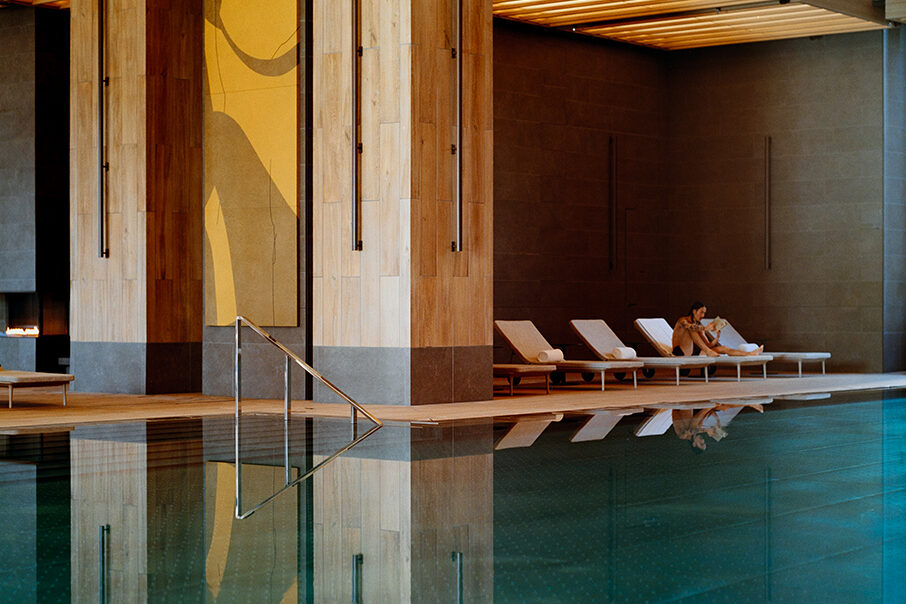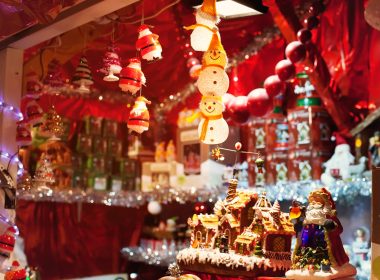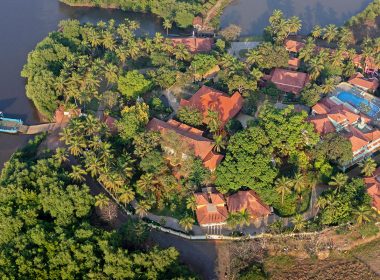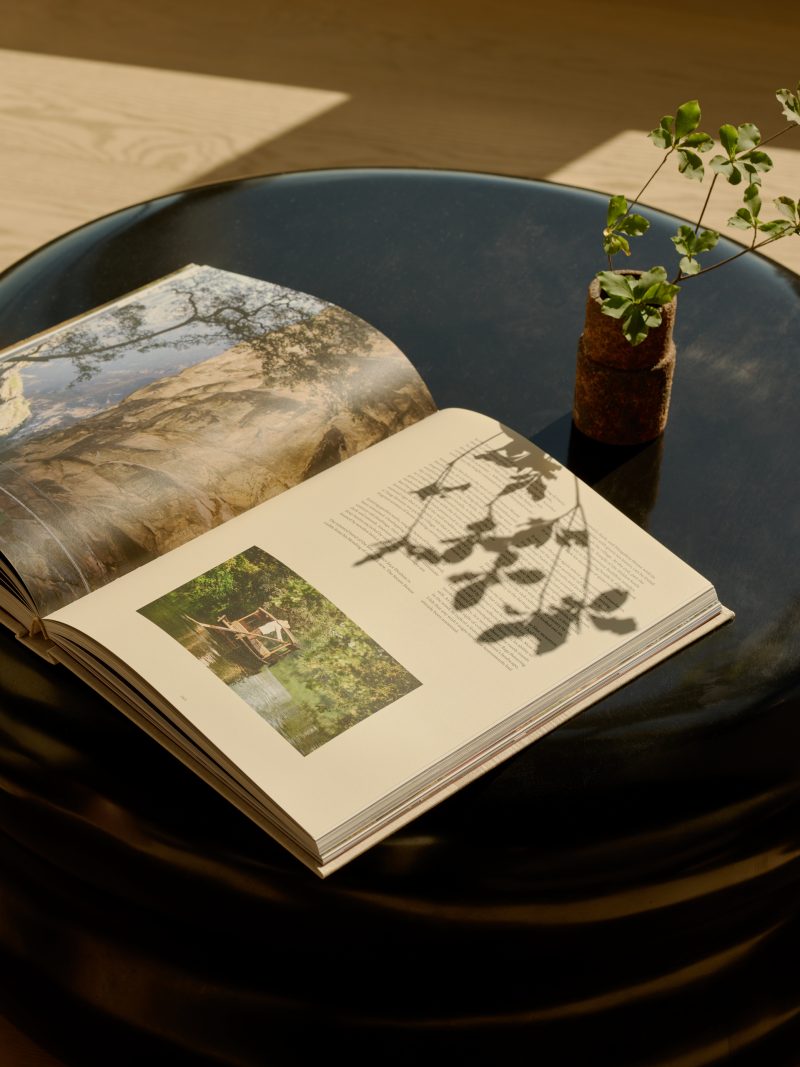When Janu Tokyo quietly opened its sculptural doors in March 2024, it wasn’t just another five-star unveiling — it marked a bold new beginning for Aman Group. Not just a sibling, but a younger, more social spirit, Janu (meaning “soul” in Sanskrit) was designed to stir emotions, ignite connections, and reimagine urban luxury in one of the world’s busiest cities. And its very first hotel? A 122-key stunner nestled in the artfully reborn Azabudai Hills — Tokyo’s buzziest new neighbourhood.
Azabudai Hills: Tokyo’s ‘Modern Urban Village’
Let’s start with the setting. Azabudai Hills, Tokyo’s largest redevelopment project in decades, is a “city within a city” from developers Mori Building. Think of it as a blend of Manhattan’s Hudson Yards and Milan’s CityLife — but with zen gardens, sushi bars, and Japan’s tallest skyscraper at the centre. The towering Mori JP Tower rises 330 metres above boutiques, art galleries, TeamLab Borderless, a British international school, and nearly 24,000 plants.
Janu is the only hotel in this self-contained world. Walk out of the lobby, and you’re in a leafy courtyard surrounded by design-forward cafes, galleries, and Tokyo’s emerging creative class. You’re also minutes from Roppongi’s nightlife and Toranomon’s business buzz — a perfect launchpad for discovering the capital.
The Brand: Aman’s More Social Soul
Unlike the hushed serenity of Aman, Janu is vibrant, open, and inviting. The brand was born out of the pandemic-era yearning for connection — communal dining, energy-filled gyms, and shared wellness journeys. According to Vlad Doronin, Aman’s CEO, Janu is all about “connectedness and joy.” If Aman is the solo retreat, Janu is the table for six with wine flowing.
And the name? Janu means “soul” in Sanskrit, a reflection of the brand’s ethos. It plans to open a dozen hotels globally, but Tokyo is where the story begins.


Design: Jean-Michel Gathy’s Take on Tokyo Cool
Designed by the legendary Jean-Michel Gathy of Denniston, Janu Tokyo blends modern Japanese minimalism with playful European touches. The lobby features sculptural seating under a lighting installation inspired by shimenawa (sacred ropes). Expect plenty of natural textures — oak, paper, stone — alongside hand-plastered art walls and washi-screen dividers.
Rooms are a masterclass in “calm luxury”: warm woods, neutral tones, and floor-to-ceiling windows that pull in light from all angles. Many rooms feature private balconies, a rarity in Tokyo. The views? Tokyo Tower, of course, but also the verdant rooftop gardens of Azabudai Hills.
Rooms & Suites: Designed for Connection
Janu’s 122 rooms and suites range from sleek 55-square-metre deluxe rooms to the massive Janu Suite, a 284-square-metre residential-style haven with two balconies and postcard views.
Rooms are surprisingly flexible — many connect for families or friend groups. Tower View Suites offer 105 square metres of zen with a guest WC, soaking tubs, and dual vanities. Corner Suites come with wraparound views of the skyline, while Premier and Deluxe Suites bring soulful solitude with their lounge-like layouts and curated amenities.
Dining at Janu Tokyo: Restaurants Made for Sharing
Unlike more minimalist luxury stays, Janu Tokyo leans into food as a communal experience — with eight wildly diverse dining spots
Janu Mercato
This vibrant all-day Italian restaurant is built around the spirit of the Mediterranean market. Three open kitchens buzz with activity — from handmade tagliatelle being tossed with sea urchin and cream, to rosemary roast chicken coming out of a wood-fired oven. Pair it with burrata and grilled vegetables or asparagus risotto and enjoy it alfresco on the terrace. The tiramisu? Fluffy, potent, perfect.
Hu Jing
A modern take on Cantonese fine dining by Chef Yusuke Yamaguchi, Hu Jing is quietly becoming a Tokyo favourite. The tasting menu opens with five handmade dim sum for the table — plump shrimp har gow, siu mai, or delicate mushroom dumplings.
Next, you’ll choose between the beautifully delicate Chaozhou-style steamed fish served with glass noodles, lemon, and garlic — or Hu Jing’s signature Kuroge Wagyu fillet, seared with Penja black pepper and finished with a punchy black garlic sauce (+¥2,000).
Also on offer: Hong Kong-style shrimp wonton noodles, your choice of dessert (like chilled mango sago), and Chinese petit fours — sesame cookies, mini custards, or tea cakes. Elegant yet generous.
Sumi
An intimate 13-seat omakase counter that reinvents sumibiyaki (charcoal grilling) with Tokyo flair. It begins with an amuse bouche of okra, broccoli and corn purée topped with sea urchin and yuzu. Sashimi follows — think pike eel with plum, micro tomato, and white gourd.
Then comes a theatre of grilled proteins: Kuroge Wagyu sirloin, chilled shabu, aubergine, and sesame vinaigrette, or upgrade to the Kuroge fillet with grilled vegetables (+¥6,000). Each course is fire-kissed and beautifully plated.
A soba and prawn tempura interlude leads into grilled eel rice with kinpira burdock, miso soup, and pickles. Dessert? A delicate charcoal-scented pudding and mizugashi (a seasonal Japanese sweet). It’s refined, ritualistic, and quietly spectacular.
Iigura
Headed by Chef Kunihiro Shinohara, this traditional Edomae-style sushi counter is all about minimalism and mastery. Choose omakase to watch him sculpt seasonal nigiri at the intimate hinoki wood bar. Expect ultra-fresh Japanese snapper, uni from Hokkaido, and rich chutoro finished with a brush of soy. It’s restrained perfection.
Janu Grill
A bold, flame-forward space where food is cooked for the senses. Watch USDA ribeye, Japanese dry-aged T-bones, and butter-brushed lobster tails hit the grill in an open kitchen designed for drama. It’s loud, sociable, and designed for feasting — especially with a bottle of Barolo from the cellar.
Janu Bar
Run by legendary mixologist Shuzo Nagumo, this moody, architectural bar plays with ingredients in unexpected ways. Try a cocktail infused with yuzu and miso foam, or a clarified matcha negroni. The atmosphere leans glamorous without pretense — a place for stories over drinks, not selfies.
Lounge & Garden Terrace
Framed by greenery and Tokyo Tower views, this terrace is made for lingering. Afternoon tea service includes matcha madeleines, mini tarts, and signature Okinawa tea. In the evening, it transforms into a high-tea lounge with Champagne pairings and seasonal small plates.
Janu Patisserie
A jewel-box bakery that brings European technique to Tokyo’s dessert scene. Tuck into gold-leaf chocolates, Mont Blancs with Kyoto chestnuts, or one of Janu’s famed seasonal parfaits layered with fruit compote, custard, and airy sponge. Grab a slice, stay an hour.


Wellness: Tokyo’s Most Joyful Gym (and Hammam)
At 4,000 square metres, Janu’s wellness centre is one of the largest in Tokyo — and likely the most beautiful. Wellness here isn’t hushed or solitary. It’s joyful, communal, and active.
- A soaring 25-metre indoor pool opens to views of the skyline.
- There’s a spinning studio, boxing ring, martial arts dojo, and golf simulator.
- Seven treatment rooms, two spa houses (one hammam, one banya), and Janu’s signature massage and facial — using Aman Skincare and copper wands — blend ancient healing with modern rituals.
- Visitors can now book Spa House Day Experiences, which start at ¥200,000 for a 3-hour journey of hydrotherapy, massage, and scalp therapy. Yes, it’s worth it.
One Tokyo guest put it best: “I came for the omakase. I stayed for the sauna and spin class.”
Janu Tokyo isn’t trying to compete with Aman Tokyo — its quieter, older sibling up the road. Instead, it’s defining its own lane: vibrant, design-forward, and made for those who want connection with their luxury.
It’s where a family of five can book connecting rooms and hit the sushi counter at night. Where a solo traveller can make friends over cocktails at the bar, then recover with a banya session the next morning. Where Tokyo Tower is more than a photo — it’s a backdrop to a life lived well.
Janu Tokyo – Contact & Reservations
Address:
1-2-2 Azabudai, Minato-ku
Tokyo 106-0041, Japan
Hotel Phone: +81 3 6731 2333
General Email: janutokyo@janu.com
Reservations Phone: +81 3 6731 2312
Reservations Email: janutokyo.res@janu.com
Website: www.janu.com/janu-tokyo
According to LocalsInsider.com‘s readers, you can get to Janu Tokyo easily:
- Narita International Airport: Around 90 minutes by car or Narita Express into central Tokyo.
- Tokyo International Airport (Haneda): Just 30 minutes by taxi — ideal for city-hopping travellers and business guests.
- Tokyo Station: Only 10 minutes away, making Janu an easy base for anyone arriving via shinkansen from Kyoto, Osaka, or beyond.
The hotel itself is a short walk from Kamiyachō Station on the Hibiya Line and Roppongi-Itchome Station on the Namboku Line. So even subway loyalists can check in with ease — luggage and all.
Photos from janu.com










